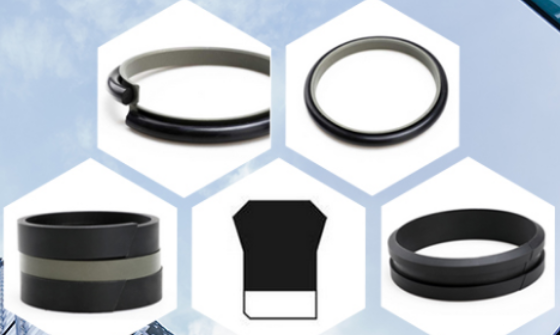
In the rubber industry products, sealing products are a kind of technical content is very high and is a variety of basic accessories. Although it is installed in the humble sealing device, but is silent and leakage in the game, related to the role of life and death. In the continuous pursuit of scientific progress and innovation, preventing the "three leakage" (oil, water and gas) has been the key to success or failure. The sky, the ground, the sea, sealing device is everywhere, especially in the development of space, sealing engineering is the most key high-tech, it is the product of multidisciplinary cross. Therefore, sealing technology, should walk in the forefront of other projects, for the safety of various fields "escort". "Do not leak" will be the eternal pursuit of the present and future theme.
Kunshan rubber seals high-tech content for industrial safety escort
Now to manufacture all kinds of different shapes and specifications by the polymer material seal products, still give priority to with synthetic rubber, because generally need sealing conditions, most are working in harsh environments, such as oil resistant, resistant to chemical corrosion medium, high resistance, low temperature, weather resistance, resistance to harmful gas, etc., must according to the different working conditions, Targeted selection of different characteristics of synthetic rubber, such as nitrile rubber, epDM rubber, fluorine rubber, acrylic rubber, silicone rubber, and can meet the conditions of use of a variety of thermoplastic elastomer materials. From the use of performance requirements and cost considerations, the most used for sealing products of synthetic rubber are NBR, EPDM, silicone, fluoro rubber and acrylate rubber.
Fluid (gas, liquid) sealing is a necessary general technology in various industrial fields, not only construction, petrochemical, shipbuilding, machinery manufacturing, energy, transportation, environmental protection and other industries are inseparable from sealing technology, aviation, aerospace and other cutting-edge industries are also closely related to sealing technology. Sealing technology is applied in a wide range of fields, and there are sealing problems in all devices involving fluid storage, transportation and energy conversion.
The consequences of sealing failure are very serious, light "run, risk, drip, leak" resulting in waste of energy and resources, heavy will make the control failure, and even produce fire, explosion, environmental pollution and other consequences endanger personal safety! According to preliminary statistics, more than 1/3 of the quality accidents of mechanical equipment and weapons are caused by the failure of seals. Among them, the serious consequences are as follows: the failure of o-ring of propeller of the United States Space shuttle Challenge caused the destruction of the aircraft and the death of people; A leak in the fuel capsule of a Russian Soyuz spacecraft killed several astronauts; A leak in the pipeline of China's Dongfanghong 3 space satellite failed to work properly after liftoff. This is why the machinery manufacturing enterprises now choose high-quality sealing products at all costs.

Development of sealing materials With the development of science and technology, the working conditions of sealing structures are more demanding. Because the temperature, pressure and corrosiveness of the sealed fluid are greatly improved, the traditional sealing materials such as felt, hemp silk, asbestos silk, putty and so on can not meet the use requirements, and it is gradually replaced by rubber and other synthetic materials. Synthetic materials such as rubber are generally high polymer, and functional groups with different characteristics on the macromolecular chain (such as chlorine, fluorine, cyanide, vinyl, isocyanate, hydroxyl, carboxyl, alkoxy, etc.) become active cross-linking points. Under the action of catalyst, vulcanizing agent, or high temperature and high-energy rays, macromolecules are transformed from linear structure and branched structure into spatial network structure, which is called vulcanization. Vulcanized rubber or other synthetic materials, macromolecules lose their original fluidity, known as elastomers with high elastic deformation. Commonly used rubber and synthetic materials are: natural rubber, styrene butadiene rubber, neoprene rubber, cyanobutadiene rubber, ethylene propylene rubber, butyl rubber, polyurethane rubber, acrylate rubber, fluorine rubber, silicone rubber and so on.